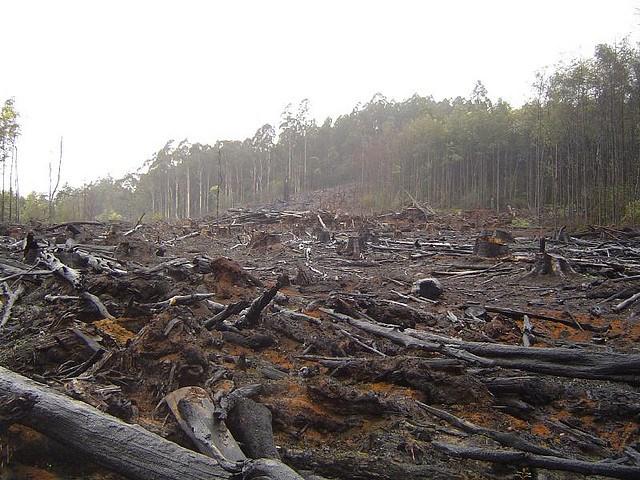
Those beautiful clothes we love to wear may be traced back to environmental and human rights abuses. A new report by Rainforest Action Network (RAN) traces tree-based fabric production back to deforestation and human rights violations risks. Fabrics like rayon, viscose and modals are derived from trees.
In particular, the report implicates 15 popular American brands, which it calls the Fashion 15. Included in the Fashion 15 is fashion giant Ralph Lauren. The other brands are Prada, LVMH, Tory Burch, Michael Kors, Vince, Guess, Velvet, L Brands, Forever 21, Under Armour, Footlocker, Abercrombie and Fitch, GAIAM, and Beyond Yoga.
Mega plantations have expanded globally to keep up with the demand for fabric production. The result is that forest-dependent and indigenous communities are being devastated. Over 20 cases have been documented in an area in Northern Sumatra, Indonesia -- owned by one company, Toba Pulp Lestari (TPL) -- in which community-owned land has been taken forcibly without community consent and then clear-cut to make way for fabric pulp production.
Over 60 percent of the people in the Northern Sumatra community of Pandumaan-Sipithuta, where 800 indigenous Tano Batak families live, earn a livelihood by tapping the resin of the benzoin tree. Five days a week, benzoin farmers tap sap from the trees, and the sap is then sold internationally, where it’s used to make incense, medicine, varnish and flavoring. One hectare of benzoin forest can produce $5,564 a year. For over 13 generations, the community has managed this forest resource, which is locally called tombak hamijon. However, the Indonesian government has not recognized or formally acknowledged the rights of these indigenous people.
In 2009, the Minister of Forests included the land of Pandumaan-Sipituhuta in concessions given to TPL, which wanted to expand its plantations to supply its paper pulp and dissolving pulp mill. The indigenous people had both their land and their livelihood taken away because TPL cleared the benzoin forests. Water-intensive eucalyptus trees were planted which dried up a local river, depriving local communities of clean water.
Human rights and environmental abuse aren’t just happening in Indonesia, but also in South Africa, Brazil and even Canada. This isn’t just something occurring in developing countries alone, but also in North America. It’s a global problem. About 70 million to 100 million trees are cut down every year to make wood-based fabrics, according to the RAN report. The industry is projected to grow about 10 percent, so the impact will increase.
What companies and consumers can do
RAN has a list of recommendations for fashion and apparel companies to address and stop human rights and environmental abuses in the pulp industry:
- Make a public commitment to protect forests and human rights in order to eliminate controversial fiber sourcing from their supply chain.
- Develop and implement a fabric/forest products sourcing policy that eliminate controversial fiber and companies that contribute to deforestation.
- Set measurable time-bound performance targets and outline auditing and independent verification measures for implementing the company’s responsible forest fabrics policy.
- Develop and implement due diligence procedures, elimination criteria and evidence based verification requirements as part of the time-bound plan.
- Work with peers and other stakeholders to advocate for wider actions that address underlying causes of controversial fabric, reduce adverse environmental and social impacts from supply chains, and support enabling laws and regulations in both producer and consumer countries.
There is something consumers can do. It’s really simple. Don’t buy clothes from the Fashion 15. That adorable blouse from Forever 21 might be cheap to your wallet, but it likely comes with a high cost to the environment and indigenous people. It's just not worth buying.
There’s one more thing consumers can do. It’s as simple as a virtual signature. Sign RAN’s petition to Ralph Lauren, urging the fashion giant to implement more sustainable fabric sourcing policies. Imagine if Ralph Lauren became an industry leader in preventing environmental and human rights abuses in fabric production? Maybe, just maybe, it could be stopped.
Image credit: Flickr/crustmania

Gina-Marie is a freelance writer and journalist armed with a degree in journalism, and a passion for social justice, including the environment and sustainability. She writes for various websites, and has made the 75+ Environmentalists to Follow list by Mashable.com.














